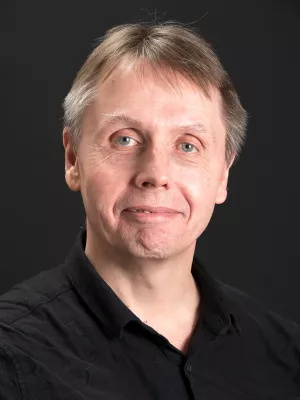
Michael Edgerton
Professor

Thrush (e91), for piano (score)
Other contributions
- Michael Edgerton
Summary, in English
THRUSH begins with my reinterpretation of the same audio that Messiaen used for his transcriptions of the North American Songbirds, blackbird and wood thrush. These audio samples were digitized and analysed using PRAAT and C-Speech, from which I made new transcriptions that were more accurate representations of the physical acoustical signal. Of course, a temporal framework had to be established for these transcriptions, for which I decided to treat in a non-metrical fashion, since birds presumably do not think in terms of man-made meters and units. Then paired with the acoustical signal, I did research on the physical mechanism by which the birds produced sounds. These involved analyses of airflow, source, resonance and articulation for both blackbird and wood thrush. It was found that some bird species produce multiphonic & biphonic signals using paired bronchi, while others used a single bronchus. When using paired bronchi to produce two independent frequency contours, the dynamical interpretation would result in two simultaneous limit cycles; meanwhile, two independent frequency contours produced by a single bronchus would result in the occurrence of nonlinear phenomena, here interpreted as a torus. Such information may not be so important when writing for piano, but can have enormous implications when writing for wind, brass, string and voice.
Then secondly, these interpretations were paired with a binary code which resembles chance, but whose underlying principles were quite simple. This code was developed by a D. G. Champernowne, published in the Journal of the London Mathematical Society 8 (1933): 254-60. This code was used to generate time, pitch, scales, register, density and so forth.
Then secondly, these interpretations were paired with a binary code which resembles chance, but whose underlying principles were quite simple. This code was developed by a D. G. Champernowne, published in the Journal of the London Mathematical Society 8 (1933): 254-60. This code was used to generate time, pitch, scales, register, density and so forth.
Avdelning/ar
- Lärare (Musikhögskolan)
Publiceringsår
2015
Språk
Engelska
Länkar
Dokumenttyp
Konstnärligt arbete
Förlag
BABELSCORES®
Ämne
- Music
Status
Published
Projekt
- composition, 1985 to current